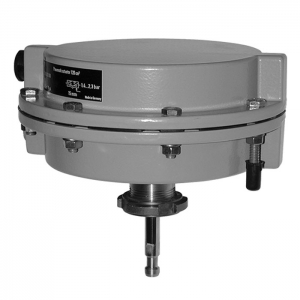What is an actuator?
Actuator is one of the automation and control instruments that control and improve the performance of an industrial valve. In an industrial valve, converting the energy needed by an actuator (wind, electricity or hydraulic energy) and converting it into mechanical energy in the valve is the done by the actuator.
Actuator types
- Manual actuator
- Pneumatic actuator
- Electric actuator
- Hydraulic actuator
- Self Actuated
Pneumatic actuator
There are two main types for pneumatic actuation:
- Diaphragm actuator
- Piston actuator
These actuators are designed in such a way that by a specific change in air pressure, they give a significant change in the valve. They change it from fully closed to fully open.
- Display 15 Products per page
Actuator types according to the type of movement
Linear actuator:
These actuators create a linear movement and the force applied to the actuator is transferred to the valve by a linear movement.
Linear actuators are mostly used in control valves (globe valve, diaphragm valve) whose actuator is diaphragm.
The power applied to the diaphragm plate causes the diaphragm plate to go up and down and this value is transferred to the valve by a rod that is coupled to the valve stem and causes its position to change.
Rotary actuator:
The movement of these actuators is rotary. These pneumatic actuators have a simple construction. There are two separate chambers in an actuator, the inner area, between the two pistons and the outer area, between each piston and the wall, and are completely isolated from each other. The driving fluid (compressed air) causes the piston to move.
Electric actuator
This type of actuator uses an electric motor to supply the required energy. This type of actuator consists of an electric motor, control system, gearbox and limit switch.
In these actuators by using a gearbox, the speed of the electric motor is reduced and it reaches the desired rotational speed. Due to the fact that the power supply of these actuators is electricity, they do not have pollution and leakage and are considered clean instrument.
These actuators have a relatively high price, but due to the fact that they have few moving parts, they have low maintenance costs.
Hydraulic actuator
In this type of operator, hydraulic power is used to supply energy. All kinds of fluids can be its energy source, in fact, these actuators can move and rotate industrial valves by converting hydraulic energy into mechanical energy.
Since liquids and fluids are not compressible, a hydraulic actuator can withstand large forces and produce high torque.
Manual actuator
Most manual actuators such as wheel handle are for linear movement such as gate valve and globe valve and also for rotary valve movement such as ball valve and butterfly valve which can normally work with all types of valves.
Self-actuated valve
Although this instrument is not a type of actuator, but a type of operator whose process fluid pressure activates a valve mechanism.
This principle is especially important in gas or liquid applications, whether it is used in open/closed applications.
The process fluid may be piped directly to the actuating element (diaphragm or piston) or passed through a small mechanism called a pilot that can regulate that pressure before it reaches the valve actuator.
This second design allows the movement of the main valve to be controlled by an adjustable device (pilot).

